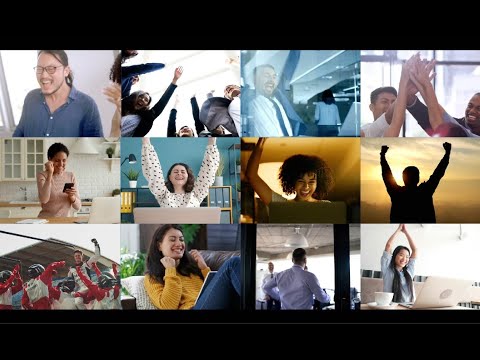It’s easy to say customer experience is your No. 1 priority, but offering a truly seamless journey is often brutally complicated on the backend. So, London-based luxury retailer Harrods uses SAP technology to ease that backend burden and deliver a silky-smooth customer experience across all its channels, which include a growing ecommerce site, private shopping in China, and more.
But Harrods’ most important channel is still its flagship store.
“When we talk about luxury and the importance of experience, the store is core to what we do,” Erik Rasmussen, head of SAP & Data Analytics at Harrods, told SAP on the NRF 2023 showfloor. “Having that single flagship store is still absolutely crucial to Harrods’ DNA and something that we expect to drive going forward for a long time.”
Harrods’ flagship store is about 1 million square feet (about 93,000 square meters) of retail space in Knightsbridge, an upscale London neighborhood known for grand Victorian and Georgian homes, fine dining, and, of course, high-end shopping. This single, full-line department store offers food, fashion, homeware, furniture, and technology – and it reaped £2.4 billion in sales last year.
“So, small footprint but massive business,” Rasmussen said, noting that the flagship store alone carries more than 400,000 products from about 4,000 brands. “And incredible things [are] going on every day.”
To keep incredible things happening, Harrods and SAP invested in the Single View of Customer project, an analytics initiative to help Harrods better understand how customers interact with the brand. When Harrods can accurately anticipate what shoppers will want, it can deliver memorable experiences that make delighted customers say, “Wow!”

How to “Wow!”
“Harrods is a unique model…A lot of other retailers will have a smaller selection of products in store and an endless aisle online,” Rasmussen said. “At Harrods, the most complete shopping experience is still to come into the store because of the variety…[and] the different experiences you have.”
Indeed, Harrods rewards shoppers at its brick-and-mortar flagship store with expert associates and a truly impressive array of products. For instance, in the furniture department, you can see examples of each piece and then choose your very specific model based myriad variables, such as size, headboard style, and even jewelry configuration.
“With one single product, you can very quickly get into things like 10,000 different permutations,” Rasmussen said during a presentation at SAP’s NRF booth. “When you think about that spread across an entire product assortment – spread across all the brands that we carry – you suddenly start to find yourself in a really challenging data management perspective.”
To conquer that challenge, Harrods consolidated all the relevant data from vendors and others into its backend, according to Rasmussen. Harrods’ digital technology team then built a Web app that lets shoppers personalize furniture from start to finish – from browsing to home delivery.
“A lot of heavy lifting that we had to do on the backend – it’s not easy to make this work,” Rasmussen said. “But from a customer experience, ultimately it becomes pretty seamless.”
Investing in Customers – And Single View of Customer
It’s vital that Harrods get better acquainted with the roughly 2.5 million consumers registered in its loyalty scheme, according to Rasmussen. Of the 400,000 or so unique customers who shop in store each year, the top 0.1%, roughly 400 people, account for about 20% of Harrods’ sales.
A 2021 implementation of SAP Customer Activity Repository and SAP BW/4HANA laid the foundation for much of Harrods’ analytics, according to Rasmussen. And, as a high-value – as opposed to high-volume – business, Harrods’ enterprise resource planning (ERP) system and data warehouse could analyze every individual transaction.
“This type of investment – giving us the right insights, the right analytics, the right visibility – has really empowered our teams,” Rasmussen said. “Knowing that information – and we let that feed things like the Single View of Customer platform or our data science initiatives or replenishment – is fuel to the things we can do to drive our business.”
Such drivers include reactivation campaigns, as happened with a shopper to whom Harrods offered a free pastry with a £50 purchase, according to Rasmussen. The customer made a qualifying purchase, received the complimentary gift, and then promptly returned to the salesfloor to spend another £30,000.
“If we can reactivate those types of customers across the entire 2.5 million [customers], the opportunities for our growth will be enormous,” Rasmussen said. “It’s something that we’re already seeing pay dividends, and we’re really excited to see what we can develop for the future.”
The Future Is Still Experience
Predictive analytics will be a big focus for Harrods, especially identifying new shoppers who might be similar to its high-value customers, according to Rasmussen. Data from SAP Marketing Cloud, SAP Customer Data Cloud, and SAP Service Cloud can help Harrods spot – and serve – its next big spenders, alongside transactional information through SAP Customer Activity Repository and analytics via SAP BW/4HANA.
“How can we take a customer who might look like they’re spending £2,000 and realize that they are customers who should be spending £200,000?” Rasmussen said in an SAP video. “Get them the right personalized service within either our personal shopping department, our concierge service, or a stylist to make sure that we can nurture them more quickly.”
And, again, this seamless customer experience is made possible by a lot of work on the backend. But it’s worth it, according to Rasmussen.
“The two things I take away from what we’ve done at Harrods are one, customer experience comes first,” Rasmussen said. “Secondly, I think we’ve really benefited from the strong partnership we’ve made with our technology partners, SAP being one of them. We’re making sure that we can invest with them, co-innovate with them, and…we’re collectively moving towards giving the customer the absolutely best experience.”



